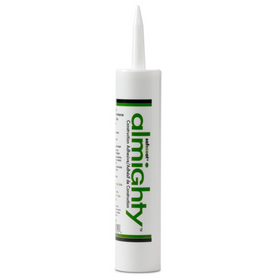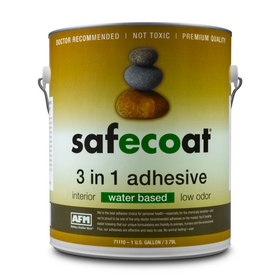
Sustainable House Hunting Tips
Last Updated: Feb 11, 2025The process of buying a home can be a daunting one. There are countless things to consider when looking for the perfect home. In recent years, the demand for healthy, efficient homes has grown. There are many things to look for when shopping for an existing home - and sustainable features should be top of mind.
We put together a checklist of elements to look for. These are divided into five themes: energy, water, air, materials, and inclusive living. While this list is not exhaustive of every possible sustainable element, it should provide a foundational starting point in your home shopping journey, and you'll find handy links below if you want to dive deeper into any given item.
Table of Contents
- Energy Usage
- Water
- Water Collection
- Indoor Air Quality
- Home Building Materials
- Inclusive Living

Energy Usage
Energy efficiency is a crucial component of a sustainable home. There are countless opportunities to make a home more efficient. Elements to look for include heating and cooling, windows, insulation, solar power, appliances, and lighting.
Heating and Cooling
- Zoned heating and air-conditioning system: When certain parts of your home are not in use (like a basement reserved for guests), a zoned system will reduce the energy required to condition these spaces.
- Smart meters: Meters can display real-time energy data for both homeowners and energy suppliers.
- Energy monitors: Like smart meters, digital energy monitors inside a home can tell homeowners more about their day-to-day consumption habits.
- Energy-efficient heating measures: There are multiple approaches to reducing the energy required to heat your homes, such as in-floor radiant heating or a geothermal heating system. If the energy usage (and associated costs) of a home you are considering are not readily available, you should get this information from the current homeowner.

Windows
- Window panes: Double or triple-paned windows will stop air from infiltrating your home's interior. Triple-pane windows are typically 50% better at insulating your home than single-pane and 25% better than double-pane. Many older homes only have single-pane windows, which will likely need to be replaced to improve the house's efficiency.
- Low "E" (low-emissivity) windows: This window coating reduces heat loss in the winter and heat gain in the summer to keep the home's internal temperature consistent.

Insulation
- Insulation types: There are many insulation types to look for, but the most environmentally-friendly ones are considered to be cellulose, cotton (denim), sheep's wool, aerogel, and some types of spray foam.
- Insulation measurements: Currently, homes are required to have between R-13 and R-19 for exterior walls. At a minimum, when shopping for older homes, make sure the home meets these requirements. Ideally, you will want a home that has an even higher R-value.
- Tight thermal envelope: The most critical factor for an energy-efficient home is the thermal envelope. Ensure that your home is adequately sealed with a particular focus on the attic, windows, and doors where heat can be lost the most.
Building Materials
Shop high-performance building materials that are vetted for benefits to your health, your pocketbook, and the planet.

AFM Safecoat Almighty Adhesive Case of 12
AFM Safecoat
In Stock

AFM Safecoat 3 in 1 Adhesive
AFM Safecoat
In Stock

Quickscrews Cabinet Install Screws
Quickscrews
In Stock

AutoSlide Automatic Sliding Door System
Autoslide
Out of Stock
2 Colors

Autoslide Smart Tag Pet Door Kit
Autoslide
Out of Stock
2 Colors

AutoSlide Elite iLock Smart Tag Pet Door System
Autoslide
Out of Stock
2 Colors

Quickscrews Pan Head Pocket Hole Screws
Quickscrews
In Stock

Autoslide Elite Smart Tag Pet Door Kit
Autoslide
Out of Stock
2 Colors

Autoslide Motion Activated Pet Door System
Autoslide
Out of Stock
2 Colors

Quickscrews Square Flat Head Wood and Particle Board Screws
Quickscrews
In Stock

Solar Power
- Solar installation: Of course, a home with existing solar is a significant step towards a sustainable home. Look for homes that have solar already implemented or are well-suited to install solar.
- Solar orientation: Keep in mind that solar can be best optimized when a home is oriented to follow the sun's path. Your local climate plays a significant role in the ideal orientation. The ideal orientation for living areas within a home is between 15 degrees West and 20 degrees East of true North. You'll want to look for a site with no significant obstructions like large trees that could block solar energy. Orientation plays a crucial role in passive solar design.

Appliances
Look for appliances with the Energy Star certification. These appliances use 10% - 50% less energy and water than standard models.
Lighting
- LED or Compact Fluorescent bulbs: These bulbs use less power and have longer rated lives than traditional incandescent bulbs. Keep in mind that if an older home currently has incandescent bulbs, they can be replaced relatively inexpensively.
- Motion-activated lighting: Have trouble remembering to turn off lights when you leave a room? Motion-activated lighting will make your life easier while saving unnecessarily wasted energy.
Water
Water is our most precious resource. Although over 70% of the Earth is underwater, less than 1% is available for human use. In addition, with climate change and extreme weather events such as floods and droughts, we are experiencing water shortages much more regularly. Here are things to look for in a home that will enable your home to have a smaller water footprint.
Plumbing
- Low flow toilets, showers, and faucets: Look for WaterSense labeled products that use at least 20% less water and energy than standard products for an affordable price.
- Hands-free fixtures: These types of accessories will add convenience to your everyday life. Since they turn off automatically, the fixtures will not waste water by running unnecessarily.

Water Collection
- Rainwater collection: Look for cisterns and barrels to collect rainwater. Collected rainwater can be used to water gardens as well as in greywater systems to flush toilets.
- Drainage: French drains, combined with sump pumps, can collect and channel water safely away from your home, thus reducing the chances of flood damage.
Water Filtration
- Water filters can be installed to solve a wide variety of water quality issues. Depending on the concern, a consumer can choose between point source or whole house filtration.
- Point-of-entry filtration: If you collect rainwater and want to use it inside your home, a point-of-entry water filter can ensure that the water you use is safe.

Air Quality
IAQ monitors: Keep an eye out for homes that incorporate an indoor air quality (IAQ) monitor that will report levels of pollutants and other conditions inside your home.
Air Flow/Ventilation
Air exchange rate (the rate in which outdoor air replaces indoor air) is key to high-quality interior air. Not many homes will have this information on hand. However, if the house is newer and has a relatively tight envelope, an HRV or ERV will be vital to attaining appropriate ventilation based on current standards.
Home Building Materials
Materials play a significant role in the health and sustainability of your home.

Inclusive Living
Purchasing a home that includes aging populations and natural elements could be crucial to your long-term satisfaction.
Universal Design: ADA accessibility
If you hope to live in your new home throughout retirement, see if the house is ADA accessible. Examples of this may include ramps, barrier-free showers and grab bars, bathrooms large enough to turn a wheelchair around, and hands-free fixtures. This may be important to consider if you have visitors who may require ADA accessibility, such as aging parents.
Biophilic Design
Biophilic design refers to a design that incorporates natural elements, showing how we can learn from nature to inform design. Some homes may include aspects of biophilic design like living walls and water features, so keep your eyes peeled for homes with this unique characteristic.
Maria Saxton
Located in Roanoke, Virginia, Maria Saxton holds a Ph.D. in Environmental Design and Planning from Virginia Tech. She works as an Environmental Planner and Housing Researcher for a local firm specializing in Community Planning, Architecture, Landscape Architecture, and Historic Preservation. Her dissertation explored the environmental impacts of small-scale homes. She serves as a volunteer board member for the Tiny Home Industry Association.


